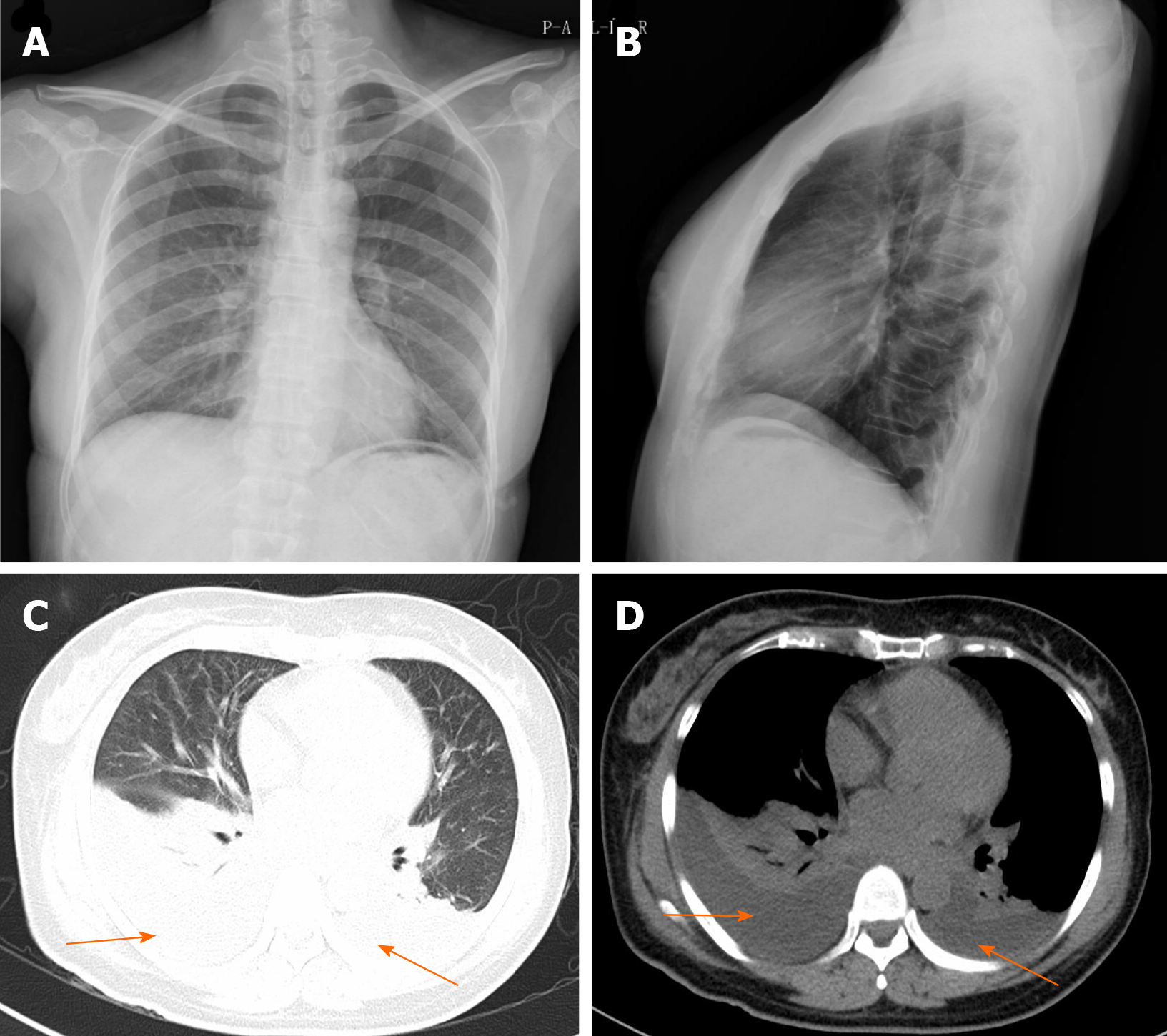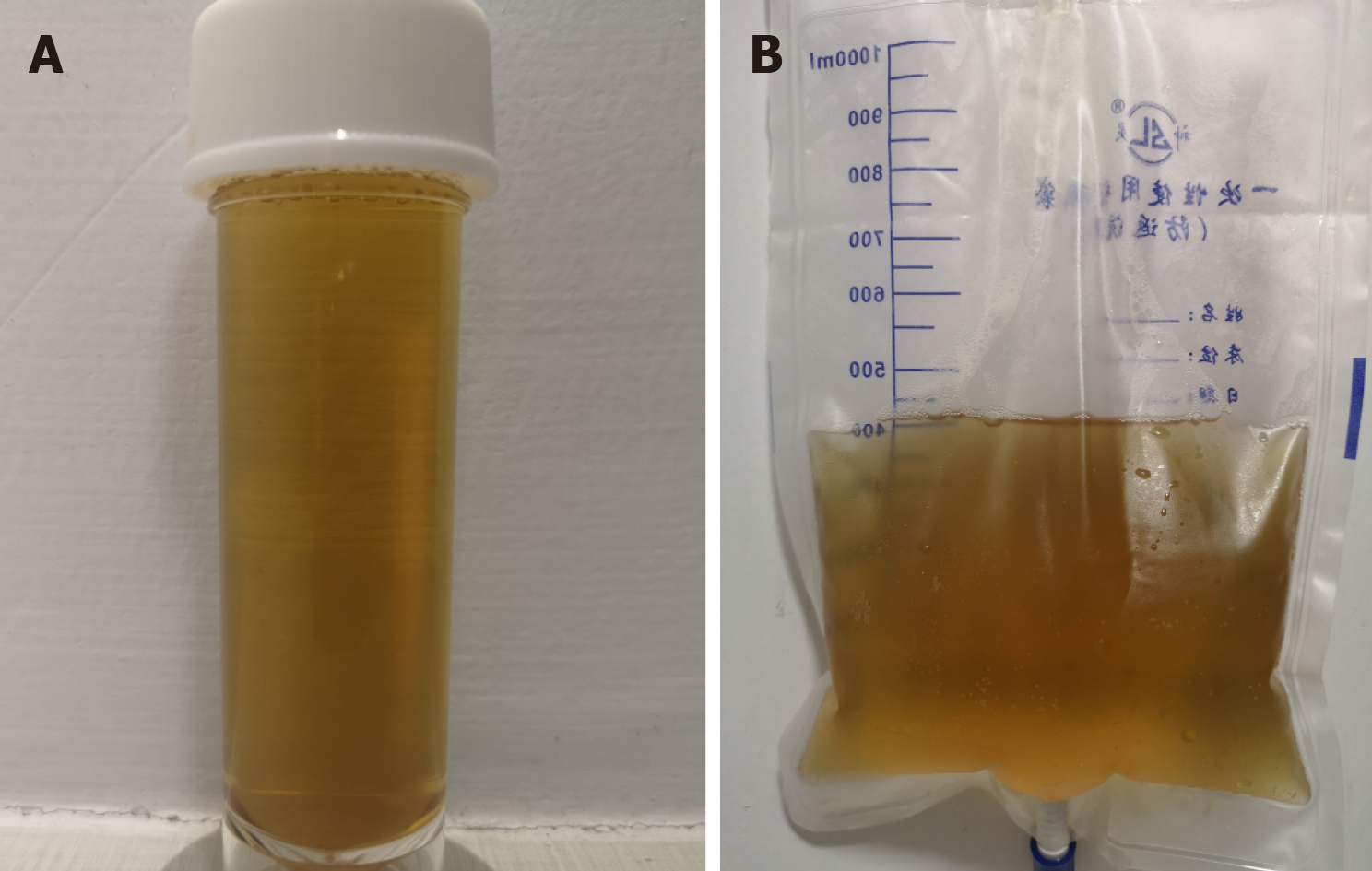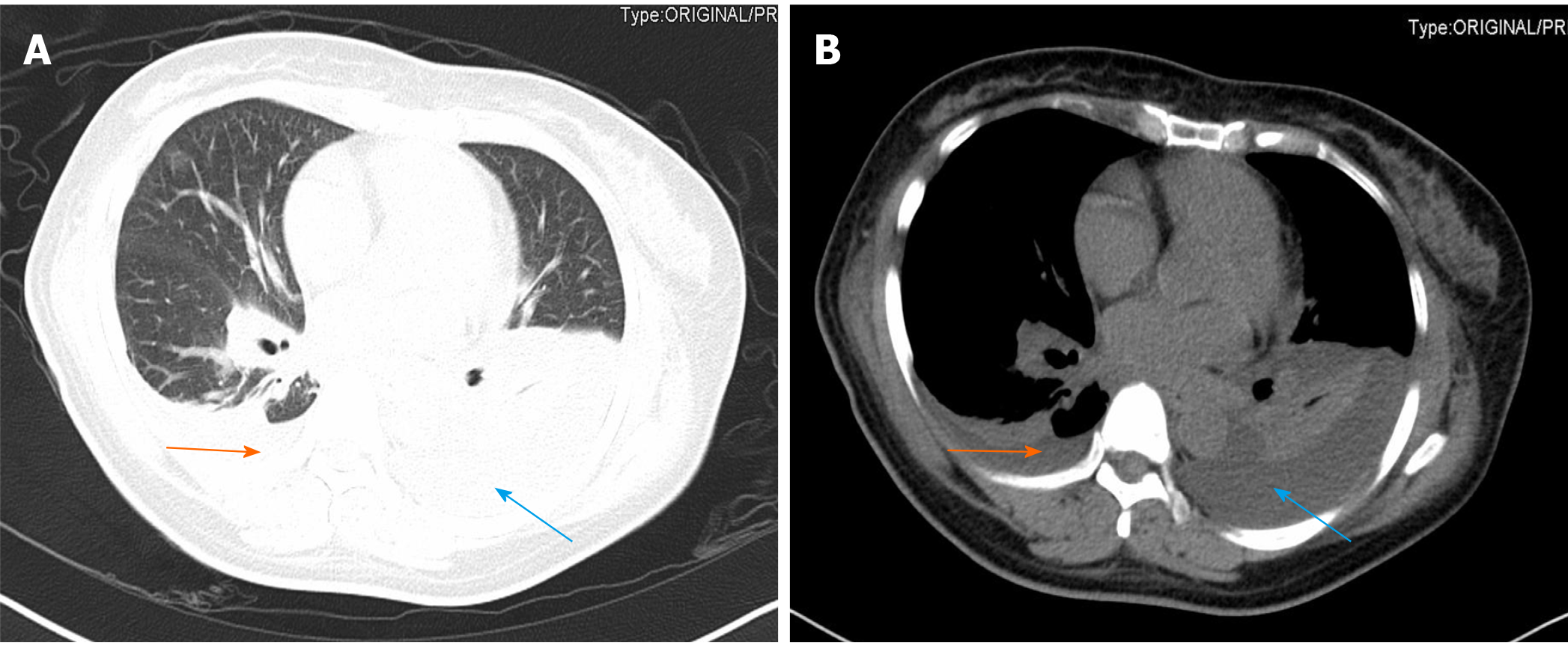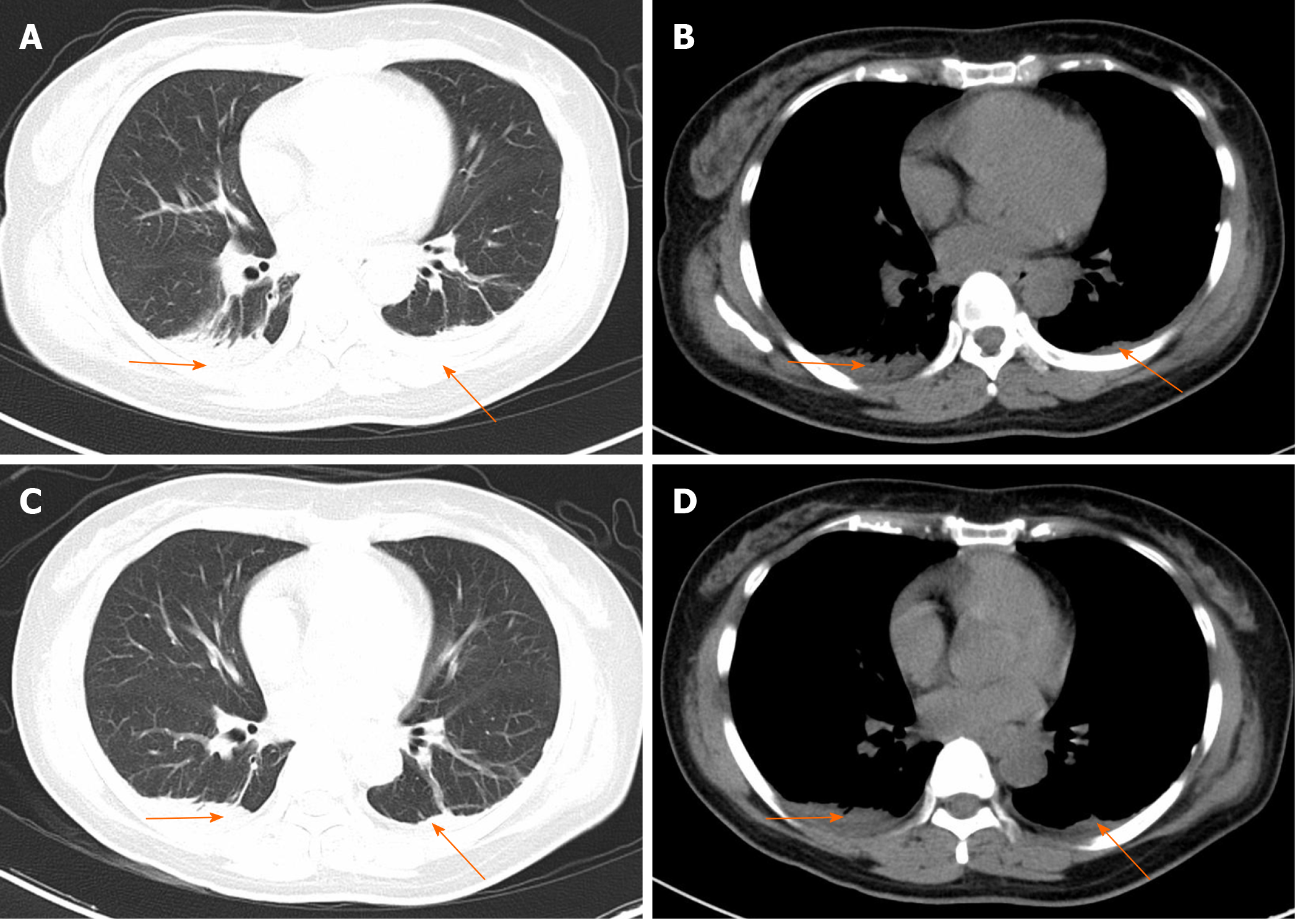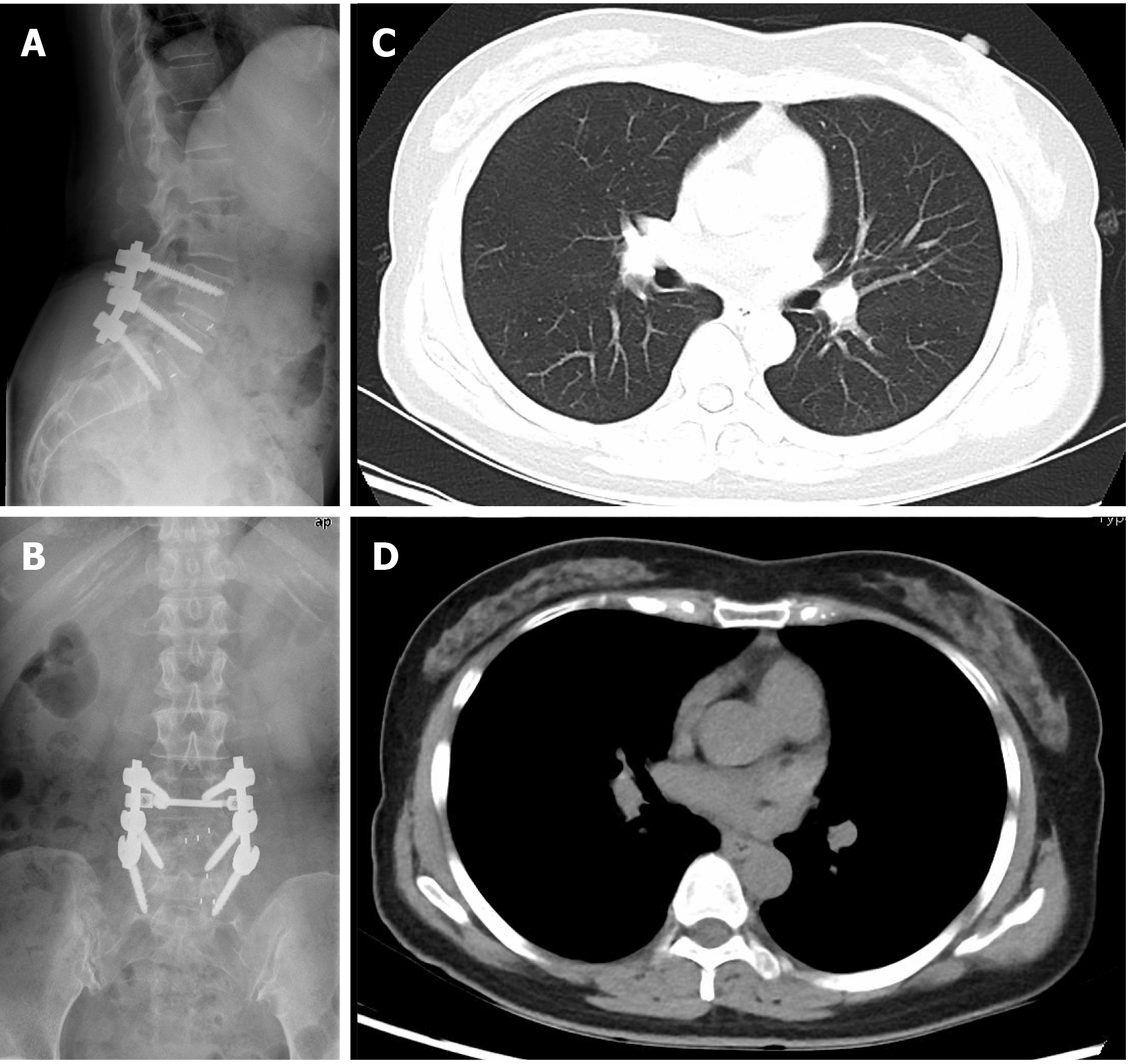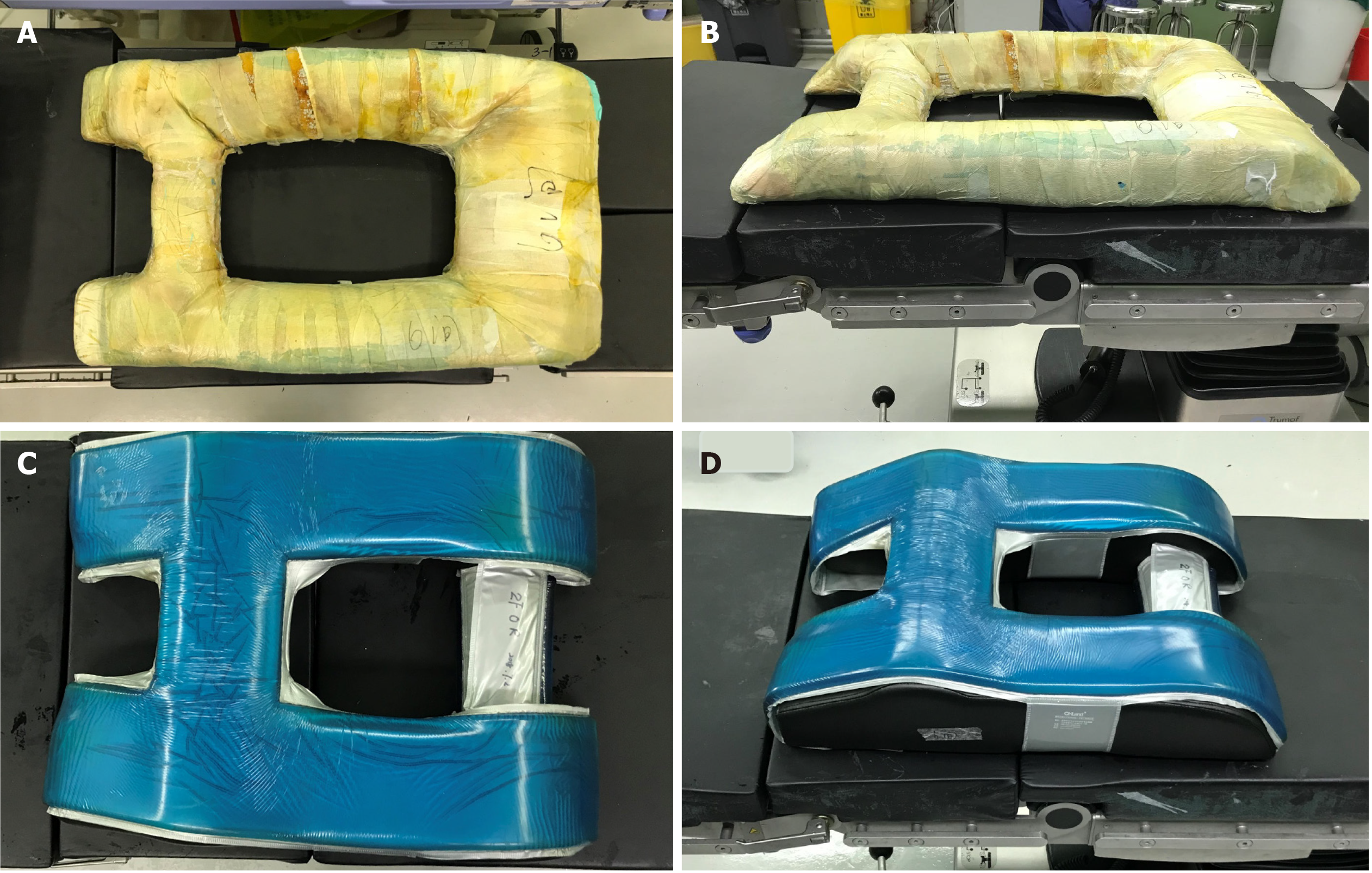Copyright
©The Author(s) 2021.
World J Clin Cases. Aug 6, 2021; 9(22): 6522-6530
Published online Aug 6, 2021. doi: 10.12998/wjcc.v9.i22.6522
Published online Aug 6, 2021. doi: 10.12998/wjcc.v9.i22.6522
Figure 1 Preoperative chest X-ray films and chest computed tomography of postoperative day 2.
A and B: Preoperative frontal (A) and lateral (B) chest films show a normal chest; C and D: Postoperative high-resolution computed tomography shows bilateral small to moderate effusion (orange arrow).
Figure 2 Thoracentesis fluid.
A: The fluid from right-sided hemithorax is yellowish and odorless; B: The fluid from left-sided hemithorax is the same as right-sided.
Figure 3 Chest computed tomography of postoperative day 6.
Right-sided small amount of effusion (orange arrow) and left-sided moderate amount of effusion (blue arrow). A: Right hemithorax; B: Left hemithorax.
Figure 4 Chest computed tomography of postoperative day 10 and day 12.
A and C: Pulmonary windows show bilateral small amount of effusion in 3 consecutive days (orange arrow); B and D: Mediastinal windows show bilateral small amount of effusion in 3 consecutive days (orange arrow).
Figure 5 Time-volume line chart.
This chart shows the changes in number of the drainage volume over time. Transverse axis means postoperative day and longitudinal axis means drainage volume. Fasting was administered on day 8, and the volume decreased significantly on day 10. The patient was re-fed on day 11 with no increase of drainage in the next 3 consecutive days.
Figure 6 Postoperative follow-up radiographics.
A and B: Reveal a successful lumbar surgery at the follow-up of postoperative 12 mo; C and D: Reveal a normal chest at the follow-up of postoperative 12 mo.
Figure 7 Surgery cushions.
A and B: A self-made, soft, square-frame cushion is routinely used to reduce intraoperative abdominal pressure in a prone position; C and D: A better new cushion is now in use.
- Citation: Huang XM, Luo M, Ran LY, You XH, Wu DW, Huang SS, Gong Q. Chylothorax following posterior low lumbar fusion surgery: A case report. World J Clin Cases 2021; 9(22): 6522-6530
- URL: https://www.wjgnet.com/2307-8960/full/v9/i22/6522.htm
- DOI: https://dx.doi.org/10.12998/wjcc.v9.i22.6522









